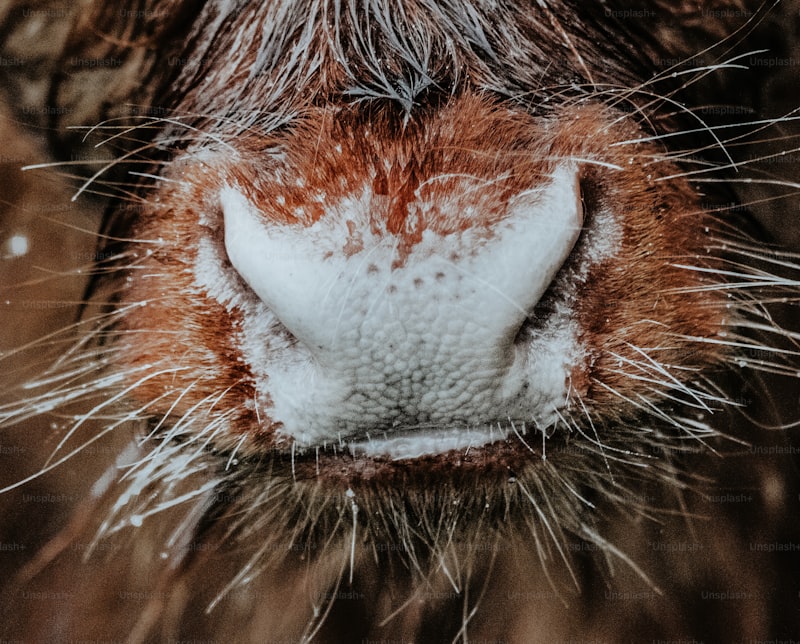Have you ever wondered how animals communicate with each other? The neurobiology of animal communication offers fascinating insights into this complex phenomenon. Unlike humans, who predominantly use spoken language, animals rely on a variety of signals, from vocalizations to body language, to convey information and intentions.
At the heart of animal communication lies a intricate network of neural pathways and signaling mechanisms. For instance, in songbirds like nightingales, the ability to produce complex melodies involves precise control over neural circuits in the brain. Researchers have found that specific regions of the avian brain, such as the song control nuclei, play critical roles in learning and producing songs, akin to how humans learn language.
Moreover, chemical signals, or pheromones, are vital in communication among insects and mammals. These biochemical cues are detected by specialized sensory neurons and processed in dedicated brain regions, influencing behaviors such as mating, territory marking, and even social hierarchies. In mammals like dogs, the vomeronasal organ detects pheromones, which are then processed in the accessory olfactory bulb, triggering instinctual responses.
The diversity of animal communication strategies reflects adaptations to ecological niches and social structures. Elephants, for example, use infrasound—low-frequency vocalizations—to communicate over long distances, while bees perform intricate “waggle dances” to convey the location of food sources to their hive mates.
Understanding the neurobiology of animal communication not only sheds light on the evolutionary pathways of species but also has practical implications. Researchers and conservationists use this knowledge to study endangered species, develop animal communication technologies, and even explore parallels with human communication disorders.
As we delve deeper into this field, we uncover more about the complexities of the natural world and the astonishing ways in which animals interact and communicate with each other.
This article aims to be engaging while providing informative content on the neurobiology of animal communication, using an informal tone and employing rhetorical questions to maintain reader interest.
Decoding Animal Chatter: Exploring the Neurobiology Behind Communication Patterns
Ever wondered how animals communicate? It’s not just about barks and chirps; there’s a complex world of signals and messages that animals use to interact with each other. From the majestic humpback whale’s haunting songs to the intricate dances of bees, animal communication is a fascinating realm of study.
At the heart of this mystery lies neurobiology – the study of how the brain processes information and controls behavior. Animals, like humans, rely on intricate neural pathways to decipher and respond to signals. For example, songbirds learn their tunes through a process akin to human language acquisition, involving specialized brain regions that process sounds and mimicry.
Take the honeybee’s waggle dance, a remarkable form of communication used to convey the location of food sources. Through precise movements and vibrations, bees transmit information about distance and direction, all orchestrated by their sophisticated neural circuits. It’s as if they’re performing a choreographed ballet to guide their hive mates.
But communication isn’t just about survival; it’s also about social bonding and hierarchy. Wolves, for instance, use howls to mark territory and rally their pack. Each howl carries unique information, much like a signature tune, allowing pack members to identify each other and coordinate hunts.

In the ocean depths, dolphins engage in complex whistles and clicks, forming a language of sorts that scientists are still unraveling. These marine mammals use echolocation not only to navigate but also to communicate intricate messages across vast distances.
Neurobiologists delve deep into these phenomena, studying how different species’ brains process and respond to signals. It’s a window into the evolution of intelligence and social behavior, shedding light on our own human capacities for language and social interaction.
From the African savannah to the depths of the Amazon rainforest, every species has its own unique way of “talking.” By decoding these communication patterns, scientists gain insights into the rich tapestry of life on Earth, where every chirp, roar, and song serves a purpose in the complex web of nature’s symphony.
From Calls to Cognition: Unveiling the Brain Mechanisms in Animal Communication
Animal communication spans a vast spectrum, from the haunting songs of whales echoing through the ocean depths to the intricate dances of bees communicating the location of nectar-rich flowers. But what goes on inside their brains that enables such sophisticated communication?
Let’s delve into the fascinating world of animal cognition and communication. At the core of this marvel are neural processes that parallel our own human communication abilities. Just like us, animals use specialized brain regions to process and interpret signals from their environment.
Take birds, for example. Their melodic songs aren’t just beautiful; they’re also rich in information. Research has shown that birds like the nightingale have dedicated brain circuits that control the production and learning of songs. It’s like having a built-in musical instrument in their heads!
Moving from melodious birds to charismatic mammals, dolphins provide another intriguing case study. These intelligent creatures communicate through a combination of clicks and whistles, using a highly developed auditory system. Their brains process these sounds in ways that allow them to convey complex messages, from coordinating group hunting strategies to expressing social bonds.
But it’s not just about sound. Animals also communicate through visual cues and even chemical signals. Think of how fireflies use bioluminescence to attract mates or how ants leave pheromone trails to guide their colony to food sources. Each of these behaviors is underpinned by intricate neural networks finely tuned by evolution.
Understanding these brain mechanisms not only sheds light on the diversity of animal communication but also offers insights into our own cognitive abilities. By studying how different species process and respond to signals, scientists gain a deeper understanding of the evolution of communication itself.
So, the next time you hear a bird’s song or watch dolphins playfully leaping through waves, remember – behind these acts lies a complex symphony of neural activity, connecting them to their environment and each other in ways that continue to amaze and inspire us.
Neurobiological Wonders: How Animals Navigate the Complexities of Communication
Have you ever wondered how animals effortlessly navigate the intricate web of communication? It’s not just instinct; it’s a marvel of neurobiology. From the majestic humpback whale’s haunting melodies to the synchronized dance of honeybees in a hive, animal communication spans a spectrum of complexity that continues to fascinate researchers worldwide.
Take birds, for instance. Their melodic songs aren’t just for pleasure; they convey detailed messages about territory, mating availability, and even warnings of danger. Each chirp and warble is finely tuned to convey precise information to their avian counterparts.
In the depths of the ocean, dolphins click and whistle in what seems like a symphony of sound. These marine mammals use echolocation not only to navigate but also to communicate with astounding clarity. Each click reveals a world of information about their surroundings, helping them locate prey and stay connected with their pod.

On land, prairie dogs have developed a sophisticated system of calls that can describe the size, shape, and color of a potential predator. Their language is so intricate that it’s akin to a detailed conversation, allowing them to warn others in their colony of imminent threats.
Even insects, with their tiny brains, demonstrate remarkable communication skills. Ants leave chemical trails to guide their nestmates to food sources, while honeybees perform intricate dances to communicate the location of nectar-rich flowers. These behaviors highlight not only their intelligence but also the intricate neural pathways that enable such precise communication.
Inside the Animal Mind: Neurological Insights into Species-Specific Communication
Have you ever wondered how animals communicate with each other? It’s not just about barks, chirps, or growls; there’s a whole world of complex neurological processes at play. Understanding these processes gives us a fascinating peek into the animal mind.
Animals communicate in ways that are unique to their species. Take birds, for example. Their intricate songs aren’t just beautiful melodies; they’re coded messages that convey information about territory, mating readiness, and even danger. Scientists have discovered that birdsong involves specific brain regions that control both the production and perception of these songs, akin to how we use language.
But it’s not just birds that have specialized communication skills. Dolphins, known for their intelligence, use a sophisticated system of clicks and whistles to communicate underwater. These sounds are produced in their nasal passages and are modulated by structures in their brains that are remarkably similar to our own speech centers.
Insects, despite their size, also have intricate ways of communicating. Take ants, for instance. They use pheromones—chemical signals—to leave trails for their colony mates, guiding them to food sources or alerting them to danger. This form of chemical communication is governed by highly specialized neural circuits that allow ants to coordinate complex behaviors without any verbal language.
Frequently Asked Questions
Can studying animal communication help us understand human language
Studying animal communication provides insights into the evolution and mechanisms of language, aiding in our understanding of human language development and cognition.
What role does neurobiology play in the evolution of communication behaviors in animals
Neurobiology shapes the evolution of communication behaviors in animals by influencing how their brains process and respond to signals. Understanding neurobiological mechanisms helps reveal how communication strategies evolve to enhance survival, mating success, and social cohesion among species.
How do animals use their brains to communicate
Learn how animals use their brains to communicate, exploring the fascinating ways they transmit signals, interpret behaviors, and convey messages through complex neural processes.
What are the key brain regions involved in animal communication
Discover the pivotal brain regions that drive animal communication. Explore how structures like the auditory cortex, limbic system, and specific nuclei in the brain facilitate complex signals and responses crucial for interaction and survival in various species.
What is the neurobiology behind animal communication
Explore the neurobiology behind animal communication, detailing how animals use specialized neural circuits and chemical signals to convey information. Understand the role of brain regions and neurotransmitters in facilitating these complex behaviors, shedding light on the evolutionary advantages of such communication strategies.


